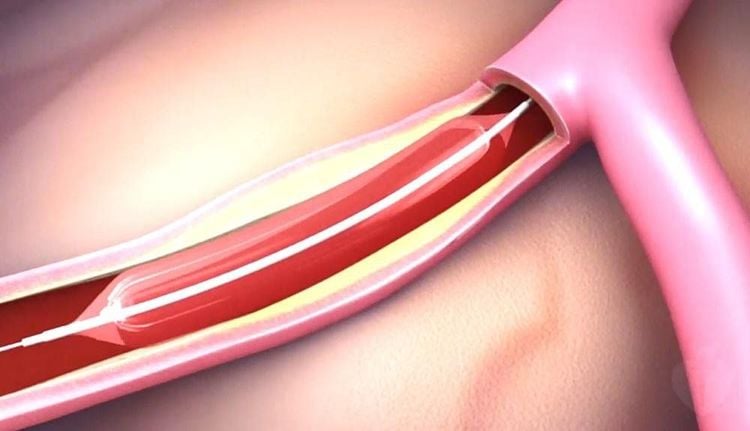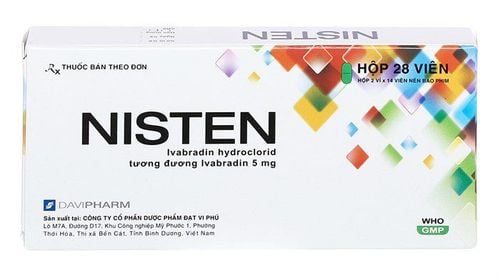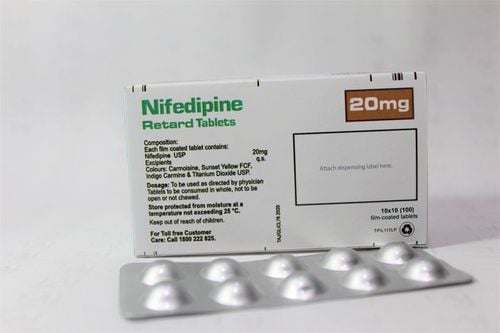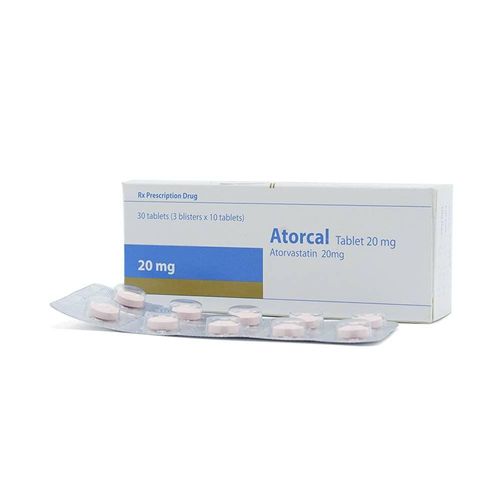This is an automatically translated article.
The article is professionally consulted by Master, Doctor Pham Van Hung - Department of Medical Examination & Internal Medicine - Vinmec Danang International General Hospital. The doctor has 30 years of experience in examination and treatment of internal diseases, especially in Cardiology.Coronary artery disease is one of the common cardiovascular diseases caused by atherosclerosis. Left chest pain, fatigue, and shortness of breath are common symptoms of the disease. Treatment of coronary artery disease includes a number of methods such as medication, revascularization, and angioplasty.
1. Overview of coronary heart disease
Coronary artery disease, also known as coronary artery disease, coronary insufficiency, ischemic heart disease is a condition in which the heart does not receive enough blood due to the narrowing of the coronary arteries that carry blood to the heart.The cause of coronary heart disease is mainly due to atherosclerosis, which narrows the artery lumen, common in middle-aged and elderly people, with high blood pressure, diabetes, overweight, obesity, frequent smoking. cigarette.
Typical symptoms of coronary artery disease are left angina pectoris, the patient is often tired, short of breath, short of breath, especially when exertion. If left untreated, coronary heart disease can lead to a heart attack or even death if the patient is not treated promptly.
2. Methods of treating coronary heart disease
Coronary artery disease can be diagnosed by the following methods:Rest and exercise electrocardiogram Rest and exercise echocardiography or dobutamine Cardiopulmonary X-ray Cardiac enzyme Radioisotope scintigraphy exercise Multi-slice computed tomography (MSCT) Contrast coronary angiogram (also known as coronary DSA) After being diagnosed with the disease, depending on the cause and condition, the level of the disease. The doctor will recommend an appropriate treatment plan. Treatment methods for coronary heart disease include:
Medical treatment (medication) Angioplasty and stenting of coronary artery bypass surgery Aortic and coronary artery bypass surgery Laser recanalization

Coronary vasodilators (Nitroglycerin, Nitromint, Risordan, ...): The drug works to reduce chest pain, increase blood flow to the heart. The drug is used when there is pain or before exertion, movement. Antiplatelet drugs (Aspirin, Plavix, Ticlid, ...): The drug has the effect of preventing the formation of thrombus in the coronary arteries, reducing atherosclerosis. The drug is used routinely when patients with coronary artery disease do not have gastrointestinal bleeding or peptic ulcers. Beta-blockers (Atenolol, Bisoprolol, Metoprolol, ...): Drugs that slow heart rate, reduce myocardial oxygen demand, lower blood pressure. The drug is used in cases to reduce the risk of myocardial infarction, however, it should be noted in patients with bronchial asthma or with bradycardia below 60 beats/min ... 2.2 Angioplasty and stenting of the arteries The purpose of coronary angioplasty and stenting is to recalibrate a narrowed coronary artery with a balloon and metal tube (stent). Angioplasty and stenting procedures for coronary artery disease are performed as follows:
Coronary angiography with contrast A specialized catheter (catheter) contains a microscopic wire inside, the end of which is attached to a balloon. , is threaded from the radial artery (if this is not possible, the radial artery may substitute femoral access) to the heart and into the narrowed coronary arteries. The balloon at the end of the wire is inflated and dilates the lumen to place the stent (metal holder). This stent will prevent the artery from narrowing. Treatment of coronary artery disease by dilation and stenting procedures has advantages such as:
No need for general anesthesia, only local anesthesia, less invasive, less painful, because only percutaneous intervention. The procedure is short (45 - 120 minutes, depending on the case). Length of hospital stay after the procedure and quick recovery. This method is indicated for patients with complex diseases that cannot be operated on. After stenting, patients still need to take medication to treat coronary heart disease for the rest of their lives.

Coronary artery bypass surgery to treat coronary artery disease is to connect the aorta and the narrowed coronary artery branches with another healthy part of the patient's artery. Depending on the severity of the disease, the doctor may perform various bridges to help improve blood flow to the heart.
This method is indicated for cases of coronary artery stenosis and can not perform dilation and stenting procedures.
2.4 Laser revascularization The purpose of laser revascularization is to help relieve angina attacks.
This method is performed by using lasers to create small channels through the heart muscle, reducing myocardial ischemia.
This method is indicated for patients with coronary artery disease who cannot perform these two surgeries.
3. Prevention of coronary heart disease
Patients with coronary heart disease need to develop a healthy lifestyle to prevent disease progression, especially after treatment. Specifically:Nutrition: Limit salty foods, reduce foods that contain a lot of cholesterol and fat. If you have diabetes, you need to reduce sweets and flour. Exercise: Exercise, exercise regularly. If you are overweight or obese, you need to lose weight by increasing exercise. Activities: Quit smoking (if any) or avoid inhaling secondhand smoke.

To protect cardiovascular health in general and detect early signs of myocardial infarction and stroke, customers can sign up for Cardiovascular Screening Package - Basic Cardiovascular Examination of Vinmec International General Hospital . The examination package helps to detect cardiovascular problems at the earliest through tests and modern imaging methods. The package is for all ages, genders and is especially essential for people with risk factors for cardiovascular disease.
Please dial HOTLINE for more information or register for an appointment HERE. Download MyVinmec app to make appointments faster and to manage your bookings easily.
SEE MOREHow many types of coronary heart disease are there? How to detect coronary artery disease? Causes of coronary atherosclerosis














